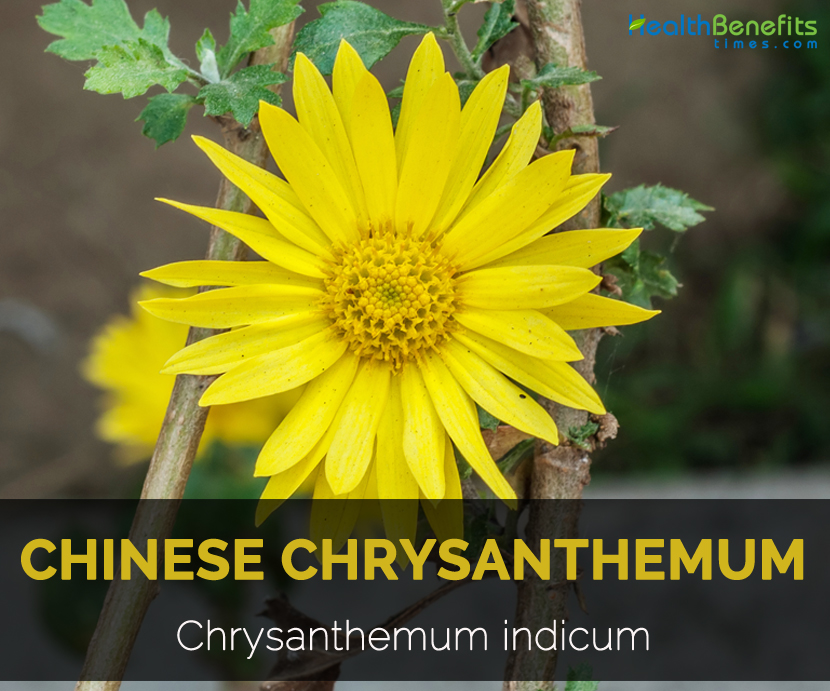| Chinese Chrysanthemum Quick Facts | |
|---|---|
| Name: | Chinese Chrysanthemum |
| Scientific Name: | Chrysanthemum indicum |
| Origin | The plant is inherent to East Asia-Eastern China and Central and Southern Japan. |
| Shapes | Achene, cuneateoblong, compressed |
| Health benefits | Treatment for hypertension, inflammation, respiratory disease, whooping cough, sore eyes |
Traditional uses
- In Oriental traditional medicine, it is used for treating colitis, pneumonia, cancer, stomatitis, sores, fever, intoxication, inflammatory diseases, pertussis, vertigo, hypertension, respiratory ailments and hypotensive symptoms.
- In Southeast Asia and India, the plant is used as blood tonic, antiphlogistic, antipyretic, aperient, vulnerary, febriguge and is used for treating eye ailments.
- It is used for treating hypertension, inflammation and respiratory diseases.
- The plant is used in India with black pepper for treating gonorrhea, calculi, brain affects and also used as an antidote for mental depression.
- In Malaya, the plant is used for headaches, colds and as a poultice for sores.
- The flower or entire plant is useful for whooping cough.
- In Vietnam, flowers are used for treating fever, cold, vertigo, photopsia, dacryolithiasis, ophthalmia, hypertension, amblyopia, xerophthalmia, phlegmon, furunculus and boils.
- Apply the poultice made from flowers externally for curing furunculosis.
- Flowers are used as a tonic for alleviating cough and use it externally for lowering bruising.
- Flowers emulsion is used for cervix infections.
- Flowers are used for treating sore eyes in Malaya.
- In Guan, flowers infusion is used as an aid for intermittent fevers and used by women to aid menstrual problems and hysteria.
- In Indochina and China, leaves are used for treating migraine.
How to Eat
- In Japan, flower heads are consumed by marinating in vinegar.
- In China, it is used as vegetables.
- Use the dried flowers in mixed spices or as food additives to add flavor.
- It could be used in the form of herbal tea or beverages after sweetening with honey or sugar.
Precautions
- Allergic people should not use it.
- Use it in moderate amounts.
- Consult the health practitioner for use.
References:
https://www.itis.gov/servlet/SingleRpt/SingleRpt?search_topic=TSN&search_value=37228#null
http://greenlifeuniverse.com/species/chrysanthemum-indicum.html
Awesome
Comments
comments
